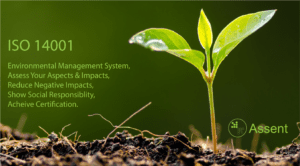Energy Monitoring – Benefits and Risks
As we have discussed in the first of this series of blogs, monitoring energy is key to energy reduction. Both automatic meter-reading systems and portable electric data loggers are a cost-effective and simple way to collect detailed energy data. However, some of these systems rely on connecting to Wi-Fi and this is where issues can arise. Energy monitoring equipment, once connected to your business Wi-Fi, can increase the risk of being hacked by providing a backdoor to those who would like to access your system illegally. We advise the use of standalone systems that do not require Wi-Fi and can record data over an extended period prior to it being transferred by cable or memory card.
An effective energy-measurement strategy
To manage your organisation’s energy use you need to implement an effective energy-measurement strategy.
This strategy should consider the following points:
Roles and Responsibilities
Defining and communicating roles and responsibilities is key to ensuring things go smoothly and that there are sufficient resources available.
Data, Information & Knowledge
You need information to make informed decisions and you can’t do that without robust data. It is key to monitor the right things and at the right level.
You can then use that knowledge to improve energy efficiency and eliminate waste.
Procedures
Documenting the processes by which you will monitor will help everyone understand what is required and what their role is. This very much links back to roles and responsibilities.
Pick a Metric
It is key to quantify savings achieved by energy projects and campaigns. However, the metric may change dependant on who you are sharing this information with. For example, financial savings, CO2 savings are some interesting metrics, but there are 1000’s out there.
Objectives
It is important to set meaningful objectives based on the knowledge you have gained. The SMART principle is an old but solid one.
Compliance
It is key to understand the relevant legal compliance obligations as these will play a big part in any future initiatives and the objectives you set. With requirements such as the TM44, they can also be very helpful in informing you of future plans.
Communication
Communication is key; letting people know what you intend to, how they can help and what has been achieved will really help get the buy-in needed for any project to be a success.
Investment
This does not just mean investment in energy initiatives. By considering energy in any future investment you make can help make savings in the long-run as projects will be able to take full advantage of cost-effective energy efficiency opportunities.
Please make sure you follow the other blogs in the series to find out more about energy and ISO 14001.
Guest Blog by Paul Stevens from AvISO Consultancy – Part of a series by Assent Risk Management and AvISO Consultancy
22/10/2018


